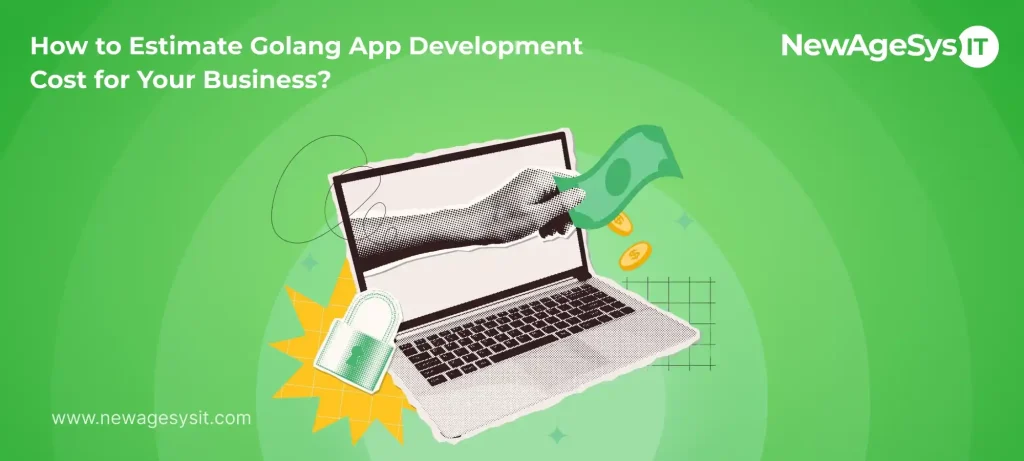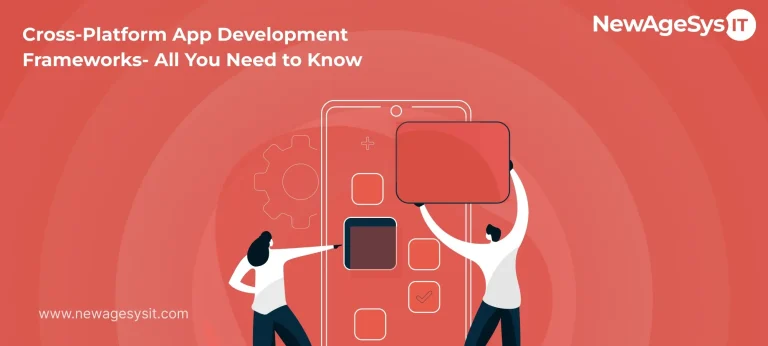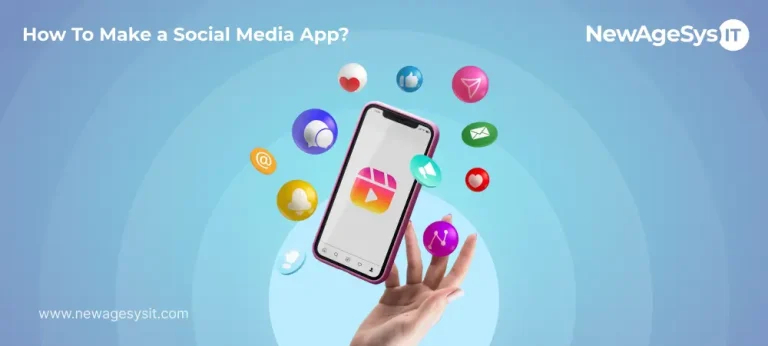| Key Takeaways: Golang combines the performance of C/C++ and the simplicity of Python, making it ideal for scalable business apps. The cost of developing a Golang application ranges between $10K-$300K+. Project estimation of Golang apps follows procedures like requirement gathering, effort breakdown, cost projection, and risk buffer. Outsourcing ensures that your app is scalable, structural, and accountable, unlike freelancers who are only suited for small tasks. Golang’s concurrency, simplicity, and cloud-native readiness makes it a top choice for developing moden scalable solutions. |
Like any mindful business, congratulations, you have already taken the next logical step, which is to learn about ‘Golang App Development Cost.’
Confused about the congratulations. Well, allow us to deliver the context.
The Netflix’s, Uber’s, Amazon’s, etc., of today are global services. They may have started off with a limited capacity, but the ultimate goal was to conquer the world. And, despite a groundbreaking marketing campaign that pushes this limit, as business owners, the technology should also support the expansion. Why? Well, because once you are successful in your initial endeavors, the logical move is to expand. Basically, an inherent need for scalability.
And, it is no mystery that Golang or Go (whichever you prefer) is the way to go, and that too cost-effectively.
We’ve been in the business of delivering immaculate software solutions for more than 25+ years, with Golang solutions being our core offerings.
So, let us take you through the different facets related to the Golang project estimation, helping you tap all the critical nuances to get ahead.
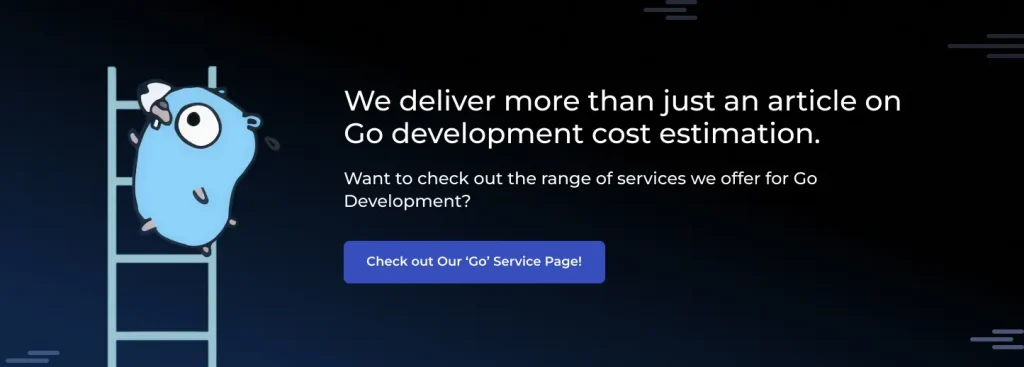
Why are Businesses Choosing Golang? – A Bit of History with Capabilities of the Programming Language
Before this section really starts, let us fill you in on several incredible stats related to Golang:
- In Q1 of 2024, the total number of Golang developers was estimated to be around 4.7 million.
- 25,000+ companies that include top-tier names like Google, Dropbox, Netflix, Walmart, etc., use Golang.
- 18% of companies that have annual revenue greater than $100 million use Golang.
- Around 46.5% of companies that use Go are able to stay operational with fewer than 200 employees.
- The U.S. is the leading adopter of Golang, with countries like the UK, Canada, Australia, and Germany following.
- Go has actually witnessed a 7% increase in usage between 2024 and 2025, particularly in fields like AI, data, and backend.
Now, since we have already shared enough data that showcases global Go domination, it’s time to answer the question that we promised in the title of this section. For this, we’ll extrapolate on its history and capabilities, as briefly as possible.

Go (as discussed earlier) is also known as Go. It is an open-source programming language developed in 2007 by Robert Griesemer, Rob Pike, and Ken Thompson.
The idea was shaped when Google itself had to find a way to handle its growing infrastructure. This included facets like massive distributed systems, heavy web traffic, and complex cloud services. And, while existing languages like C++ and Java were powerful, they were also slow. Also, languages like Python, though capable, lacked the desired performance and concurrency needed to scale.
Go was designed with the aim of balancing the performance of C/C++ with the simplicity of Python. It is because of these capabilities that, over the years, Golang has gained massive adoption in multiple industries. In fact, today, its power is critical to run tools like Docker, Kubernetes, Terraform, and Prometheus.
Now, let’s assess the capabilities of Go for Businesses:
- High Performance: Compiles to machine code while enabling near C++ execution speeds.
- Scalable Concurrency: It’s the most desired feature, delivering built-in support (goroutines) for handling thousands of tasks simultaneously.
- Simplicity & Maintainability: Offers clean syntax and minimalism that reduces development overhead.
- Cloud & Infrastructure Ready: In the current market, it is the preferred language for DevOps, microservices, and distributed systems.
- Cross-Industry Use Cases: It is a widely adopted language in industries like fintech, streaming, blockchain, and e-commerce.
Understanding Golang App Development Cost
Before estimating Golang app development cost, the more important aspect is to understand where the Golang development budget is invested. This understanding should include the various steps taken for developing a Golang-based service, what aspects are covered in it, and why the cost matters.
For ease, we have provided a table below that shares a holistic idea of the aforementioned:
| Stage | What It Covers | Why It Matters for Cost |
|---|---|---|
| Planning & Discovery | Requirement gathering, market research, and feasibility analysis | Reduces risks and avoids costly rework later |
| Design | UI/UX design, prototyping, wireframes | Affects customer experience and development effort |
| Development (Coding) | Backend logic, APIs, integrations, and database setup | Core cost driver — depends on complexity and team size |
| Testing & QA | Unit tests, integration testing, performance/security checks | Ensures quality, reduces maintenance costs |
| Deployment | Setting up servers, CI/CD pipelines, and cloud configuration | Determines scalability and stability at launch |
| Maintenance & Support | Bug fixes, updates, security patches, and new features | Ongoing investment to keep the app reliable and secure |
Now, let’s understand the different pricing models used by outsourcing companies like us (NewAgeSys) for delivering Golang solutions.
Common Pricing Models in Golang Development
Outsourcing companies like NewAgeSys usually work under one of these pricing approaches:
The majority of outsourcing companies usually make use of one of these pricing approaches. Therefore, let’s understand:
| Pricing Model | How It Works | When to Choose |
|---|---|---|
| Fixed Price | Pre-defined scope with a fixed budget and timeline | Best for small projects or MVPs with clear requirements |
| Time & Materials (T&M) | Pay for actual hours and resources used | Ideal for evolving projects where the scope may change |
| Dedicated Team | Hire a full team (developers, designers, QA) on a monthly basis | Perfect for long-term, large, or complex projects needing flexibility |
Another important aspect to clearly understand Golang project estimation is to know how the estimation truly works.
- Requirement Gathering → The scope, features, and goals associated with your Golang project are gathered.
- Effort Estimation → Features are broken down into smaller development tasks and the hours of labor.
- Cost Projection → Estimated hours are multiplied by the hourly rates (or apply the chosen pricing model). In our case, it’ll range between $25-$49 per hour for varying complexities.
- Risk Buffer → Adding a 10–20% buffer for any unexpected challenges that may occur during the development cycle.
- Final Estimate → An estimation document is shared with the client along with timelines and resource allocation.
For a complete guide on mobile app budgeting—including cost ranges, pricing models, and optimization tips—explore our detailed breakdown of mobile app development costs for all platforms and project sizes.
What are the Factors Affecting Golang Development Costs?
The section pinpoints the factors that directly affect the Golang app development cost:
- Project complexity & features – Simple MVP vs. enterprise-grade solution.
- App type & size – APIs, SaaS, backend systems, microservices, or web applications.
- Design & UX needs – Custom UI, integrations, and accessibility.
- Team experience & location – Senior vs. junior developers, outsourcing vs. in-house.
- Infrastructure & scalability requirements – Cloud services, or DevOps setup.
- Ongoing maintenance & support – Upgrades, bug fixes, and security patches.
Golang Development Cost Breakdown
Golang app development cost breakdown can be accounted for by factoring in two main cost drivers, i.e., project scope and developer rates. The culmination of these two will help you estimate the cost to build a Go application:
Cost Breakdown by Project Size
| Project Type | Typical Use Case | Timeline | Estimated Cost Range* |
|---|---|---|---|
| Small-scale MVP | Simple apps, prototypes, proof-of-concepts | 1–3 months | $10,000 – $30,000 |
| Medium Projects | SaaS tools, fintech apps, integrations, APIs | 3–6 months | $30,000 – $100,000 |
| Enterprise-level Apps | Complex platforms, multi-service architectures, and high scalability | 6+ months | $100,000 – $300,000+ |
For any business, it is important to understand that the cost can vary based on team location, engagement model, and project complexity. Also, it is not really something to say, but the more features, integrations, and scalability requirements are added, the more your budget will increase. So, plan well to avoid any scope creep.
Cost of Hiring Golang Developers
Developer rates are critical, especially if you are a startup. Rates do vary by region, hiring model, and the seniority of the developer hired.
Let’s factor each of these things:
By Region (Hourly Rates):
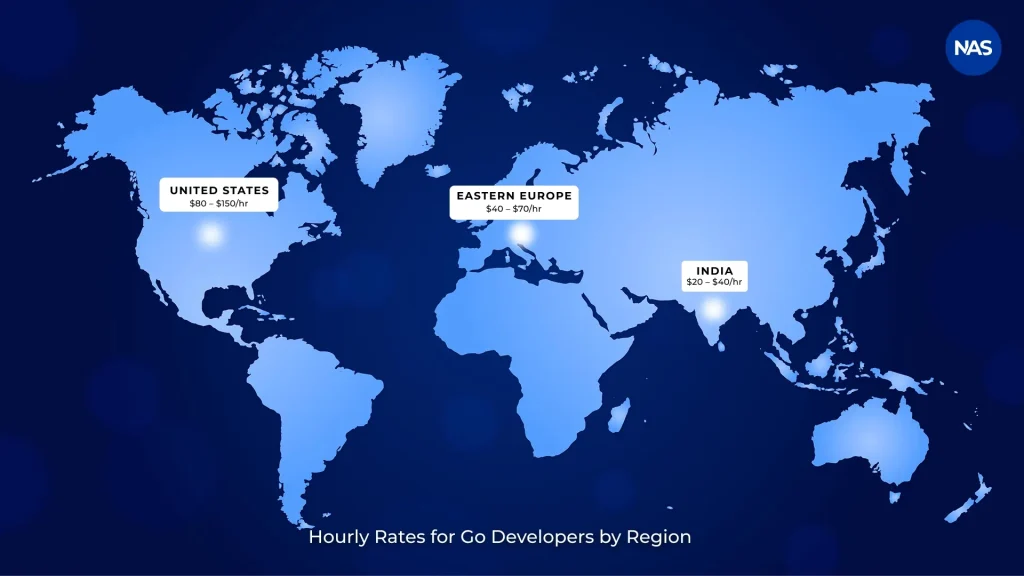
| Region | Average Hourly Rate |
|---|---|
| India | $20 – $40/hr |
| Eastern Europe | $40 – $70/hr |
| United States | $80 – $150/hr |
By Hiring Model:
| Hiring Model | Description | Cost Impact |
|---|---|---|
| In-house team | Salaried developers on payroll | High (includes hiring, training, infra, benefits) |
| Freelancers | Independent developers hired per project | Moderate to low (but risk of inconsistency) |
| Outsourced teams | Dedicated professionals from a Golang development company | Balanced (scalable, reliable, cost-efficient) |
By Developer Seniority:
| Level | Typical Role | Hourly Rate Range |
|---|---|---|
| Junior | Support tasks, bug fixes | $20 – $40/hr |
| Mid-level | Feature development, integrations | $40 – $70/hr |
| Senior | System architecture, optimization, leadership | $70 – $150/hr |
Most companies outsource their Go work to regions like India or Eastern Europe. However, if you want an experienced U.S.-based company, then here we are. Yes, we are based out of the U.S.. However, as mentioned earlier, our ideal charges range between $25-$49 per hour.
But how are we able to keep ourselves sustainable as opposed to any other U.S.-based company? Well, we have multiple offshore development centers. This gives us access to incredible talent at affordable prices while maintaining the work ethic of the U.S.
How to Estimate Your Golang Project?
We won’t be giving off the exact process, not because we want to hide it, but because it always has a slight variation depending on the project. However, the process mentioned below kind of tries to act like one-size-fits-all. Our thoughts? Enabling you to calculate your estimate, just like we do at NewAgeSys.
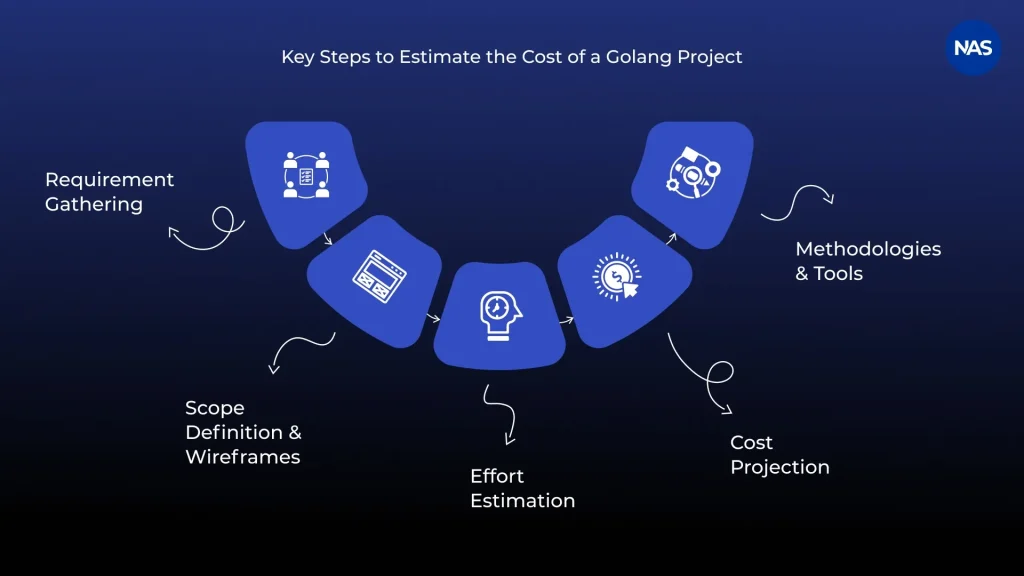
1. Requirement Gathering
Understand the goals, end-user needs, and the desired features. Based on it, create a document that carries all the functional and non-functional requirements.
2. Scope Definition & Wireframes
Now, break down your project into modules and a user journey. This will enable you to prepare wireframes or mockups to help you visualize features. In fact, if you are looking forward to getting funded, an incredible wireframe with data to support the success of your idea can do wonders.
3. Effort Estimation
Start calculating the development hours required per feature. For this, you can either make a Google search or simply ask ChatGPT for the estimated development hours. Also, make sure that you are factoring in team size and roles. For instance, frontend, backend, QA, and DevOps.
4. Cost Projection
Factor in developer rates, infrastructure (cloud, APIs, tools), and ongoing maintenance for your project. And, create a detailed Golang development cost breakdown document.
5. Methodologies & Tools
To manage and maintain the pace of development, use frameworks like Agile/Scrum for iterative delivery. You can also make use of estimation techniques like story points, planning poker, or function point analysis for accuracy.
Ways to Optimize Golang Development Budget
There are more than 12 ways to optimize your Golang app development cost. However, the 12 mentioned below are proven to work and can be integrated easily within your process. So, let’s begin:
- Start by prioritizing core features. You can do this by building an MVP to validate your idea before investing any money in advanced features.
- Leverage outsourcing teams from regions like India or Eastern Europe. This will offer you massive talent pools at affordable prices, without compromising quality.
- Choose the right pricing model based on your project and its evolving needs.
- To minimize infrastructural costs, leverage open-source Golang libraries and cloud-native services.
- Adopt agile methodologies that enable iterative development and avoid any upfront large investments.
- Make use of CI/CD pipelines to reduce any manual effort, errors, and long-term maintenance costs.
- Create a balance between senior developers (for architecture) and juniors/mid-level (for execution) to optimize hourly rates.
- Plan for scalability ahead of the curve. Proper planning for a well-architected system prevents costly rework in the future as the user base grows.
- To keep technical debt under control, regularly conduct code reviews and refactoring of expenditure.
- Get a retainer from the outsourcing company if you’ve hired one for long-term maintenance. These are considerably cheaper than ad-hoc fixes.
Why Outsource Golang Development to NewAgeSys?
Here’s something about us. See, choosing the right partner can make a significant difference, especially in terms of realizing the success of your project. And, if you are in need of the right one, here are some things that we bring to the table:
- More than 25+ years of experience in development, and hands-on with modern technologies.
- Dedicated Golang development services teams that have proven expertise in web apps, APIs, cloud-native solutions, and enterprise.
- Capability to work in diverse industries like healthcare, fintech, Real Estate, etc.
Some of the benefits of using Golang that you can enjoy when working with NewAgeSys:
- You will be able to save on infrastructure and recruitment by having access to ready-to-deploy Golang experts.
- At a price range of $25-$49 per hour, we are considerably cheaper than most U.S.-based outsourcing companies.
- Agile processes and optimized workflows that accelerate time-to-market.
- Vetted Golang professionals of all experiences, capable of building scalable and high-performance applications.
So, if you have a decent idea of Golang project cost estimation and are willing to get a quote for Golang development, use the CTA below to reach us.

Conclusion
Now, to end this article, well, we have already said a lot. However, just to repeat our thoughts for the finality of the article, are there other programming languages that can support you? Well, that’s a big yes. A few great examples would be Node.js, Rust, Java, Python, Elixir, etc. Can all of these languages beat Golang or get beaten by it? Actually, both.
With our extensive experience, yes, we can say that Go is the way to go. However, every language has its own pros and cons. And, since you are reading a ‘Golang App Development Cost,’ we think you may have made up your mind. Although if you haven’t, then revisit your business proposition, your goals with it, and where you’d like to take it. These will give you enough answers for either saying ‘Yes’ or ‘No’ to this wonderful language.
But if you are still confused, connect with us. We will listen to your queries and will deliver a plausible answer that should help you further. Stating this, for now, let’s bid farewell, hoping we’ll see you on the other side of the grass.
FAQs:
Q.1 How much does it cost to hire a Golang developer on average?
Globally, hiring a Golang developer should ideally range between $20/hr and $250/hr. This figure varies by region, experience level, and the hiring model.
For more context, here are the prices to hire Golang developers from different regions:
| Region | Junior Developer | Mid-Level Developer | Senior Developer |
|---|---|---|---|
| India / South Asia | $20 – $40/hr | $40 – $70/hr | Up to $120/hr |
| Eastern Europe | $30 – $55/hr | $50 – $80/hr | $90 – $140+/hr |
| Western Europe / UK | $50 – $80/hr | $70 – $110/hr | $110 – $160+/hr |
| North America (U.S., Canada) | $60 – $100/hr | $100 – $150/hr | $150 – $250+/hr |
| Latin America | $30 – $45/hr | $45 – $70/hr | Up to $90+/hr |
Q.2 Is Golang good for web development?
Without a doubt, Golang (Go) is considered a great choice for the process of web development. However, here’s the why:
| Feature | Benefit |
|---|---|
| High Performance | Compiles to machine code, speeds close to C/C++ |
| Built-in Concurrency | Handles thousands of requests simultaneously |
| Simplicity | Clean, easy-to-maintain syntax vs. verbose languages |
| Standard Library | Rich packages for networking, HTTP, JSON, etc |
| Scalability | Ideal for startups & enterprises expecting rapid growth |
| Cross-Industry Use | Adopted by Uber, Netflix, Dropbox, and more |
| Cloud Ready | Seamless with Docker, Kubernetes, and serverless setups |
However, there are a few places where it lacks, such as:
- Limited ecosystem as compared to JavaScript.
- Small talent pool in comparison to Python or Java.
Q.3 How much does Golang app development cost in 2025?
There’s a lot that can be factored in while giving out a Golang development cost breakdown. However, if we talk about the ideal price ranges, then here they are:
- Small MVPs with Basic Features: $10,000 to $30,000
- For Medium-Complexity Project: $30,000 to $100,000
- For Enterprise Level/ Large Scale App: $100,000 to $300,000+
Q.4 List out three factors that affect the cost to build a Go application the most?
Again, there are a lot of factors that affect Golang development cost, and for first-timers overseeing a project, it can become a lot to comprehend. So, these are the three biggest cost drivers for building a Golang (Go) application:
- Project Complexity & Features: More advanced features mean higher development effort, which means higher cost.
- Team Composition & Location: Rates vary significantly depending on whether you form an in-house team, outsource a project, or use freelancers.
- Scalability & Infrastructure Requirements: Here are a few to get you a decent idea: Cloud Setup, Microservices, DevOps pipelines, and performance optimization.
Q.5 What is the average time to develop a Golang application?
The average time of Golang app development varies with the complexity. Here’s our estimates:
- Small MVP / Prototype → 1–3 months
- Medium-scale project (SaaS tools, APIs, fintech apps) → 3–6 months
- Enterprise-level app (complex systems, multi-service architecture, high scalability) → 6–12+ months
Q.6 Is Golang more cost-effective than other programming languages?
Yes, Golang is often considered cost-effective because:
- Faster Development → Clean syntax and a rich standard library in comparison to Java and C++.
- High Performance → Compiles to machine code, reducing the need for expensive infrastructure scaling.
- Built-in Concurrency → Capable of handling multiple requests efficiently, thereby lowering server costs.
- Lower Maintenance Costs → Simple and readable codebase for long-term technical debt.
- Cloud-Native Advantage → Works seamlessly with Docker and Kubernetes, minimizing DevOps overhead.
Q.7 What’s included in a standard package of Golang development?
Here are a few things that you can expect from a standard package for Golang development from an outsourcing company:
- Planning & Discovery
- Design
- Development
- Testing & QA
- Deployment
- Maintenance & Support
- Project Management
Q.8 Is it wise to hire freelancers or an outsourcing company for Golang development?
See, the choice between freelancers or an outsourcing company for Golang development isn’t as clear as day. Rather, it heavily depends on the nature of the work. So, here are a few pros and cons:
✅ Freelancers
- Pros: Lower cost, flexible engagement, quick for small tasks or bug fixes.
- Cons: Limited scalability, inconsistent quality, and a higher risk of delays or knowledge gaps.
✅ Outsourcing Company
- Pros: Access to a full team (developers, QA, DevOps, designers), structured processes, scalability, reliable support, and long-term accountability.
- Cons: Slightly higher upfront cost compared to freelancers.
We’d say that if you need short-term support or the project is smaller, freelancers can be sufficient. Otherwise, go for an outsourcing company.
Q.9 Which is the most common pricing model used in Golang development? And why?
The Time & Materials (T&M) model is the most commonly used one for Golang development:
Why?
- Flexibility → Many Golang projects (APIs, SaaS apps, microservices) evolve over time, and T&M allows changes in the scope.
- Transparency → Clients only pay for the actual hours and resources put in.
- Better Risk Management → Unlike fixed-price, it avoids cost overruns due to unforeseen complexities.
- Agile-Friendly → Works seamlessly with iterative development, sprint cycles, and ongoing feature additions.
Q.10 Why is Golang a preferred language for developing scalable products for businesses?
For businesses, Golang delivers speed, scalability, and cost-efficiency, which are critical to its long-term growth. And, if you need more reasons, here are a few:
- High Concurrency Support
- Fast Performance
- Microservices-Friendly
- Strong Standard Library
- Cloud-Native Advantage
- Easy Maintainability

